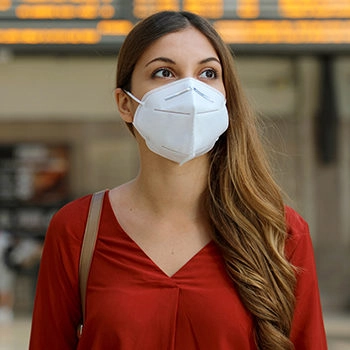PCOS test is based on the Rotterdam criteria for diagnosing PCOS.

Osteoporosis
Osteoporosis, literally meaning porous bones, is a major health concern amongst the ageing population. As people age, the bone mass density (BMD) tends to decline. This is more pronounced amongst menopausal women, with a majority of postmenopausal women showing signs of osteoporosis.
Osteoporosis increases the tendency of fracture due to age-related calcium loss in the body. Though common to both the sexes, osteoporosis is regarded as a women’s disease because women tend to have smaller and lighter bones than men. Further, during menopause, women face a severe decline in their ability to produce the bone-protective hormone estrogen. Bone density loss due to the lack of estrogen in the early menopausal years is two to five times greater than bone density loss due to ageing alone.
HRT is often recommended to help protect women against several of the health challenges faced by women during menopause. While it has emerged as an effective method of preventing bone density loss in post-menopausal women, the effects of the therapy are only temporary and last only till the continuation of treatment.
Furthermore, HRT comes with its own side effects. When HRT is continued for a long period of time, Dr. Ross Pelton and his team found that they depleted critical components from the body – magnesium, zinc, vitamins B2 and B6 and even Vitamin C. This nutrient depletion has been associated with everything from cardiovascular problems to weakened immune system and believe it or not, osteoporosis!
Tennis, stair climbing, and jogging, activities that involved jumping, such as basketball, volleyball, and skipping are great choices. Resistance training such as weight lifting can also help prevent bone density loss.
Traditional Asian forms of exercises such as yoga and tai chi help improve balance, circulation, and keeping the joints healthy. The balance improvement component helps with fall prevention. Cardiovascular and stress-reduction benefits also accrue. Tai chi is the first in line and the most recommended exercise for the prevention of falls in elders because it helps improve coordination and balance. However, as with all exercises, it is important to learn these under the guidance of a qualified and experienced teacher. A California University study of 741 adults, done over a 10-year period, showed that performing 12 specific yoga poses every day can increase spinal bone density remarkably.
An adequate diet consisting of the required amount of calcium and vitamin D3 for calcium absorption is essential to maintain bone health. National Osteoporosis Foundation (NFO) recommends 1,000 mg of calcium daily for adults under 50 and 1,500 mg of calcium for adults over the age of 50. Vitamin D3 is naturally produced by our body after exposure of skin to direct sunlight. 400 to 800 IU of vitamin D3 for adults under the age of 50 and 800 to 1000 IU of vitamin D3 for adults over the age of 50 has been recommended by the NOF. In regions with low sunlight and lifestyles that do not permit adequate daily sun exposure, supplements of Vitamin D3 and fortified food products are highly recommended.
Just remember that if you choose to take calcium supplements, drink plenty of water through the day, especially if you have a tendency to form kidney stones. Taking calcium supplements can really help you, but you have to follow the do’s and don’ts to get it right.